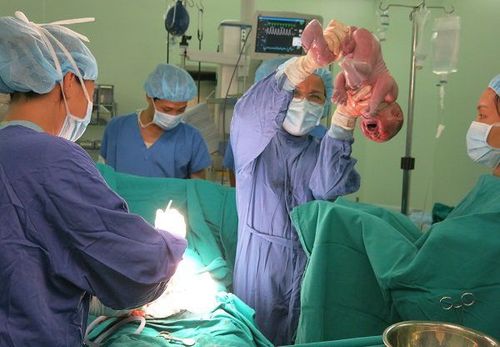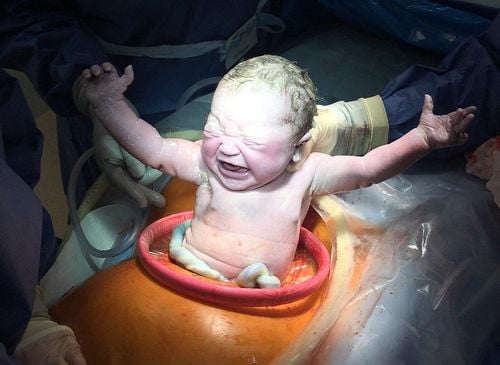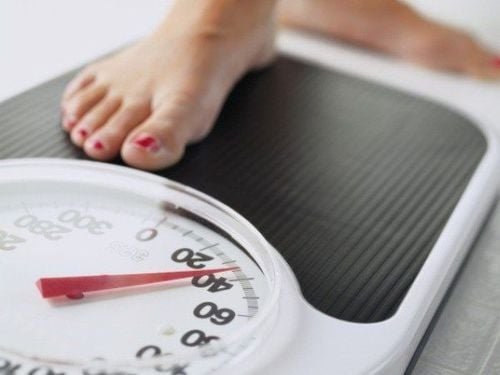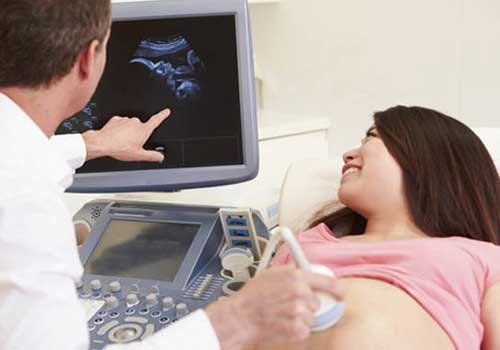This is an automatically translated article.
The article was professionally consulted by Specialist Doctor Obstetrician and Gynecologist - Department of Obstetrics and Gynecology - Vinmec Hai Phong International General Hospital
A twin pregnancy is a high-risk pregnancy, throughout the pregnancy until labor. However, twins can still be born by vaginal birth with inherent benefits if you master the following things to know.
1. What is a twin pregnancy?
Multiple pregnancy is a term used to refer to more than one fetus living in the womb. In which, twin pregnancy (twin pregnancy) is the most common pregnancy with the rate from 1 to 1.5% in natural pregnancies. This percentage tends to increase with the number of births and the age of the mother.
Twin pregnancy in particular and multiple pregnancy in general is an abnormal pregnancy but not a pathology, classified as a high-risk pregnancy because the likelihood of perinatal mortality is about 14 to 20%.
Based on pathophysiology and anatomy, twin pregnancies are divided into two types: zygote twins (or heterozygous twins) and monozygotic twins (or homozygous twins).

2. How to support a twin pregnancy?
For a twin pregnancy which is a high-risk pregnancy, regular follow-up is extremely important to properly assess the fetal status as well as select the mode of delivery. Another reason is that twins are always more likely to be delivered earlier, usually before 38 weeks. In fact, less than half of twins last longer than the 37-week mark.
About one-third of all twins can be delivered vaginally and the process follows the same principles as a singleton birth, which means labor only once but gives birth to two babies. If you plan to have a vaginal birth in advance, you should be prescribed an epidural injection to relieve pain, make labor easier and faster, and effectively support a normal delivery when the mother is pregnant. Had good pain relief.
The overall process of monitoring labor remains similar to that for singleton delivery, but for twin fetuses, the frequency of assessment is often more rigorous. To do this, the woman is fitted with monitoring devices that connect to an electronic monitor, which records the frequency, duration and extent of the uterine contractions, as well as when the water breaks. Because twin labor is often prolonged, the pregnancy is delayed due to weak uterine contractions, most women will be given birth control pills from this time.
For women giving birth to a baby, twin pregnancies are usually two vertical sides with two heads, one head and one buttocks, or two buttocks. For women with multiple births or a single child with uterine malformations, the position of the twin pregnancy can be a vertical position, a transverse position, or both horizontal positions in the same direction or in the opposite direction.
Once the cervix is open, each pregnancy will have its own separate delivery stages. This means you will need two effective cycles of pushing. However, the second push, if the position is favorable and the membranes have broken, will be somewhat easier than the first, possibly due to the advantage of having a fully dilated vagina. in a previous twin pregnancy.
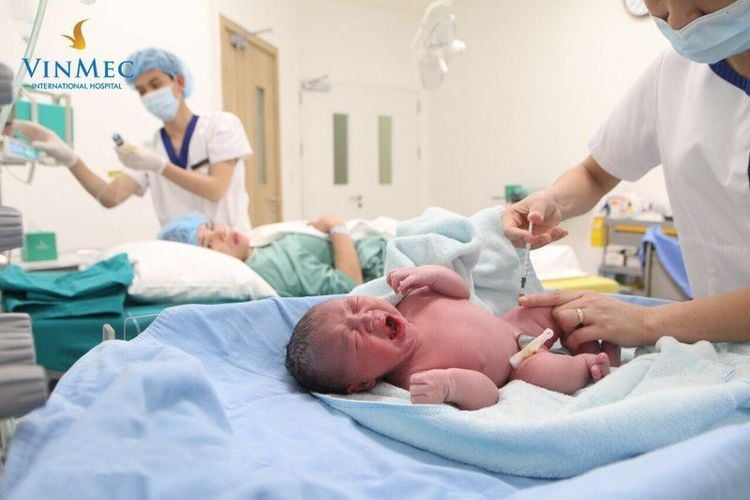
After delivering the first fetus, the doctor or midwife needs to carefully check the second fetus for position, position and position through vaginal examination as well as listening to the fetal heart. If they are in the same position, the average waiting time for a natural birth between the birth of the first and the second is usually between 15 and 30 minutes. However, if the monitor shows that the second baby is doing well, there is no need to over-accelerate. Even during this waiting period, the doctor can repeat the ultrasound to confirm the position of the second twin and make a decision about the best way to deliver the baby.
If contractions stop or get weaker after the first delivery, you should be given an inotropic infusion with the hormone oxytocin to restart the cycle. If the pregnancy has presented but the birth is difficult, the birth is slow, need to assist in cesarean section by suction or forceps to help deliver. If it is transverse, the doctor can intervene by breaking the amniotic fluid, then applying intrauterine fetal rotation and large traction if eligible.
Finally, the placenta and appendages, usually only once for both pregnancies. The placenta must be carefully examined to assess whether a twin is a twin or a single egg because the risk of perinatal death for these two types of twins is completely different. Besides, detection of placental malformations may suggest related to fetal malformations, orienting exploration and early management.
In addition, after giving birth to twins, the smooth muscle of the uterus is easy to become numb and the mother is prone to complications of postpartum haemorrhage. Accordingly, it is necessary to continue oxytocin infusion to prevent this event, to ensure good uterine contraction into a firm, palpable mass in the lower abdomen.
3. What follow-up after giving birth to twins?
Immediately after birth, the doctor or midwife will examine and examine the two newborns to determine which type of twin pregnancy is as well as to screen for common abnormalities in newborns and twins in particular. At the same time, the mother's vaginal birth also needs to be checked, ruled out trauma and intervened, if any. When there are direct intrauterine procedures, women need to use broad-spectrum antibiotics, reducing the risk of postpartum infection later.
In the case of preterm labor, it is possible that one or both babies will need a certain amount of time in special care before being returned to the family.
Whenever possible, give your baby a suckling reflex to facilitate colostrum formation. If only one baby can suckle effectively, the mother should also express milk to feed the other twin. Then, when the baby is fully capable, practice for both babies to know how to suck directly from the breast to encourage milk production for both of them.
Other care issues for twins should generally be followed as for singletons; in which, pay special attention to hygiene, nutrition and regular vaccination for children according to the appointment schedule.
Twin pregnancy is the birth of two children. Coupled with double the joy, delivering twins is a stressful and high-risk journey. Accordingly, regular check-ups during pregnancy, and choosing a reputable and quality birthplace are the top things to do to ensure a safe labor for mother and baby.
Please dial HOTLINE for more information or register for an appointment HERE. Download MyVinmec app to make appointments faster and to manage your bookings easily.
References: pregnancybirthbaby.org; nhs.uk




